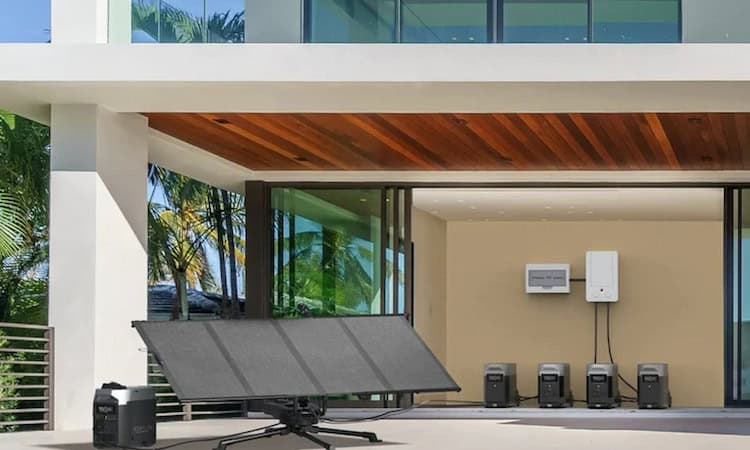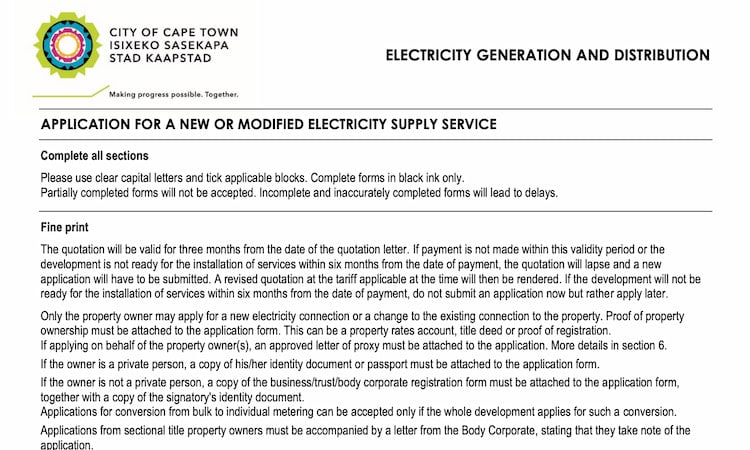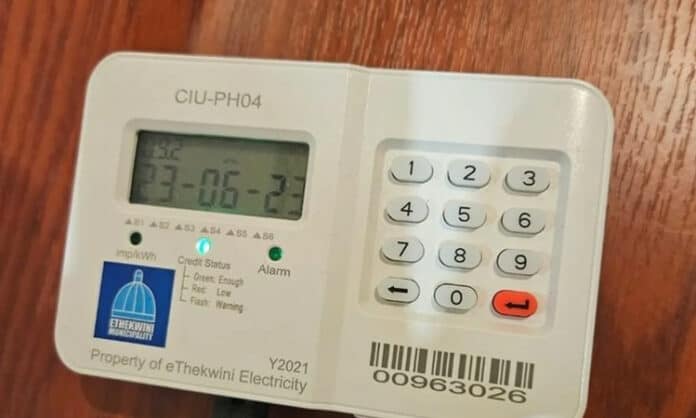Managing your electricity expenses can be a challenge, especially with unexpected bills popping up. Switching to a prepaid electricity meter puts you in control, allowing you to pay for your power upfront and monitor your usage easily.
Curious about how to apply for prepaid electricity meter in South Africa? You’re in the right place! In this guide, we’ll break down what a prepaid meter is, the perks it offers, the application process, and tips on purchasing and loading credits.
What Is a Prepaid Electricity Meter?
A prepaid electricity meter is a device that lets you pay for electricity before you use it—just like buying airtime for your phone. Instead of receiving a bill at the end of the month, you load electricity credits onto your meter, and it deducts units as you consume power.
These meters are popular in South Africa because they help you manage your electricity budget more effectively. You’ll always know how much electricity you have left, and there are no surprise bills. Once your credits run out, you simply top up again.
Prepaid meters are installed by municipalities or electricity providers and are commonly used in homes, rental properties, and businesses. They offer a hassle-free way to stay in control of your energy usage while avoiding debt and unexpected costs.
Benefits of Prepaid Electricity Meter
Switching to a prepaid electricity meter comes with several advantages, making it a popular choice for many South African households. Whether you’re looking for better energy control or pairing it with a portable power station for backup energy solutions, prepaid meters offer several benefits. Here’s why you might want to consider it:
- No More Surprise Bills: With a prepaid meter, you only use electricity that you’ve already paid for. This means no unexpected bills at the end of the month—just straightforward pay-as-you-go electricity.
- Full Control Over Your Electricity Usage: A prepaid meter helps you track your electricity consumption in real time. You’ll always know how much power you have left, making it easier to manage your budget and avoid wasting energy.
- No Risk of Debt or Disconnections: Since you’re paying upfront, you won’t accumulate unpaid electricity bills or risk disconnection due to non-payment. This is especially useful if you’re renting, as it prevents disputes over unpaid utility bills.
- Easy to Buy and Load Electricity: Topping up your prepaid meter is quick and convenient. You can purchase electricity credits online, via mobile banking, at supermarkets, or through dedicated vending points—whenever and wherever you need them.
- Budget-Friendly and Cost-Effective: Prepaid meters encourage better energy management. When you see how quickly your credits are being used, you may become more mindful of turning off unnecessary appliances, helping you save money in the long run.
- Ideal for Tenants and Landlords: If you’re renting, a prepaid meter ensures that you’re only paying for the electricity you use. Landlords also benefit because they don’t have to chase tenants for unpaid bills—it’s a win-win for both parties.
- No Monthly Service Fees: Unlike postpaid electricity accounts that may include additional service fees or meter reading charges, prepaid meters generally eliminate those extra costs, making electricity more affordable.
While a prepaid electricity meter helps you manage your energy costs, it doesn’t protect you from power cuts. If you want to save even more on electricity bills and ensure you stay powered during load shedding, investing in a solar generator is a smart and eco-friendly choice.
A great option is the EcoFlow DELTA Pro Solar Generator (PV400W), which combines solar panels with a portable power station to keep your essential appliances running. With a powerful 3.6kWh battery (expandable to 25kWh) and the ability to power heavy-duty appliances like air conditioners and dryers, it’s an ideal home backup solution. It also features six charging methods, including the ability to recharge at an EV station or combine multiple sources for an ultra-fast 6500W charge—the industry gold standard.

For quick solar recharging, the DELTA Pro solar generator can fully charge in 4-8 hours using three EcoFlow 400W Solar Panels, ensuring you have reliable, renewable energy even during grid outages. Plus, the solar panels come with an adjustable stand (40-90°) to maximize sun exposure, making them a practical, self-sustaining power source.
By combining a prepaid electricity meter with EcoFlow’s solar power solutions, you can take complete control of your energy costs and enjoy uninterrupted power—even when load shedding strikes!
How to Apply for a Prepaid Electricity Meter?
Applying for a prepaid electricity meter is a straightforward process, but it does require a few key steps. South Africa’s electricity supply is managed either by Eskom (in non-metro areas) or local municipalities (in urban regions), so start by identifying your provider.
Let’s take the Cape Town as an example. Both the City of Cape Town and Eskom are licensed to supply electricity within the Cape Town municipal area. If you’re in an area served by the City, you can apply for a prepaid electricity meter by following the steps outlined below:
1. Identify Your Application Category
As a residential customer, you can choose between the lifeline or domestic tariff. For business customers, the tariff is based on your expected monthly consumption. Both residents and businesses follow the same application process for prepaid electricity plans, so be sure to specify your category (residential or business) when submitting your application.
2. Hire an Electrical Contractor for Assessment
Before starting your application, an electrical contractor must be hired to assess your property’s cabling and infrastructure. You’ll need to submit their details with your application.
3. Gather the Required Documents
Before we dive into the steps, it’s important to be aware of some key documents you’ll need to provide and possibly complete. These include:
- A certified copy of your ID or passport
- Proof of residence (such as a utility bill or lease agreement)
- Proof of property ownership (if applicable)
- If you’re a tenant, a letter of consent from the landlord
- If applying on behalf of a business, company registration documents may be required
- Download and fill out the New or Modified Electricity Supply Application Form.

4. Submit Your Application
Submit your completed form and supporting documents at any of the Customer Support Offices listed at the top of the application form.
5. Pay the Installation Fee
Once your application is submitted, the supplier will provide a quote within ten working days if there’s existing infrastructure, or within a month if new network infrastructure is required.
If you’re a residential customer requesting a standard connection, you’ll need to cover the cost of connecting your property to the shared network. Additional charges may apply based on your electricity needs.
For non-standard connections, a quote will be provided after you’ve paid for the required capacity and any applicable quotation fees. You can find these fees in the Electricity Services Schedule of Miscellaneous Tariffs document.
6. Meter Installation
When the City contacts you to arrange installation, be sure to specify that you need a prepaid electricity meter. After approval, a technician will schedule an installation date. Key features of modern prepaid meters include:
- RF Card/Remote Recharge: You receive an RF card or access to a mobile app for topping up credits.
- Time and Load Controls: Advanced meters allow providers to restrict usage during peak hours or block unauthorized high-power appliances (e.g., illegal connections).
- Easy Installation: Many meters use rail-mounted systems, minimizing structural damage during setup.
How to Buy and Load Credits?
Once you have a prepaid electricity meter installed, you’ll need to purchase and load credits (often called tokens) to keep your power running. The process is simple and can be done in a few easy steps:
- Use the meter number on your card or receipt to purchase prepaid electricity.
- Buy your electricity from an Eskom-appointed or accredited legal vendor. You can also purchase tokens at leading supermarkets, banks, or online through your mobile phone or bank.
- Your receipt will show the amount of electricity you’ve purchased.
- Once you have your electricity token, enter the token number into your CIU (Customer Interface Unit) at home to load the units onto your meter.
- The CIU will display the amount of electricity you’ve loaded, and it will also show how much is remaining.
- As you use more electricity, the flashing light on the CIU will flash faster to indicate your usage.
Conclusion
In conclusion, applying for a prepaid electricity meter offers numerous benefits, from eliminating monthly bills to providing better control over electricity consumption and spending. By following the clear step-by-step process on how to apply for prepaid electricity meter, you can easily apply for and install your prepaid meter, ensuring a smooth transition to a more efficient and budget-friendly energy solution like solar panels. Whether you’re a residential or business customer, the process is straightforward, and with the right documentation and support, you’ll be on your way to managing your electricity usage with ease.
FAQs
How do I get a prepaid electricity meter installed?
To get a prepaid electricity meter, apply through your municipality or Eskom, depending on your area. Submit the required documents, receive a cost estimate, and make payment. Once approved, a technician will install the meter, after which you can purchase prepaid electricity tokens from various vendors. Contact your provider for specific costs and requirements.
How do I request for a prepaid meter?
To request a prepaid electricity meter in South Africa, contact your electricity provider—either Eskom or your local municipality. Ensure you have an existing connection and verify eligibility, as Eskom no longer installs three-phase prepaid meters. Submit a request through your provider, complete any required forms, and wait for installation. This switch allows better control over electricity usage.
How to get a prepaid meter from Eskom?
To get a prepaid meter from Eskom, check your account for contact details and reach out to your local Eskom office. Alternatively, call the Eskom National Call Centre at 086 00 37566 to inquire about the process. The call centre contact numbers are also available on the main Eskom website.
What is needed when applying for electricity?
When applying for electricity in South Africa, you typically need:
- Proof of Identity – A copy of your South African ID or passport.
- Proof of Address – A recent utility bill, lease agreement, or affidavit.
- Municipal Application Form – Completed and signed.
- Electrical Compliance Certificate (COC) – If required for a new connection.
- Deposit Payment – Based on your tariff and usage.
Check with your local municipality or Eskom for specific requirements.
